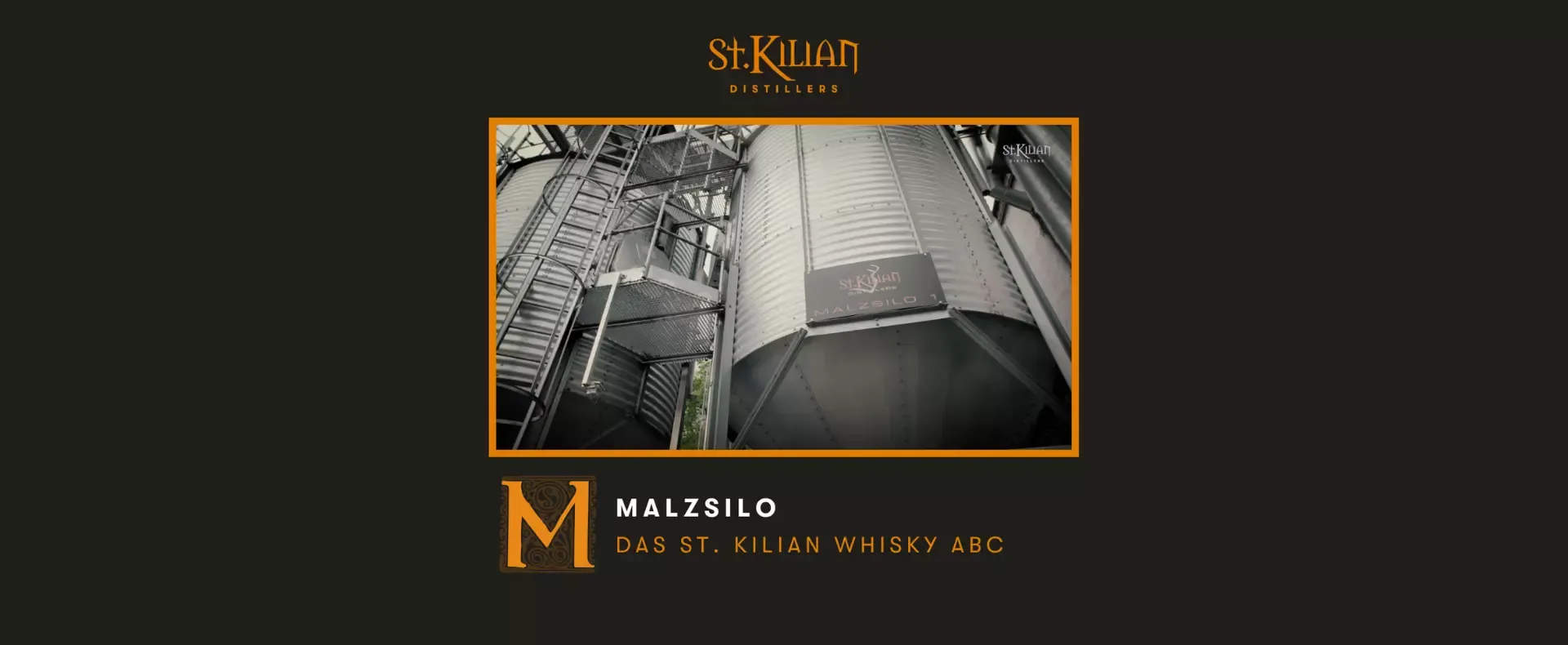M - like malt silo

Where is barley malt stored?
The production of single malt whisky requires barley malt as a feedstock. St. Kilian Distillers obtains this malt mainly from two malting plants, which is stored temporarily in silos in Rüdenau. The minimum shelf life of the Pilsner malt most commonly processed by us is given by the manufacturer as 18 months - when stored in a dry place within a temperature range of 0°C to 30°C. The malt is then stored in silos in Rüdenau. However, the residence time of barley malt in our malt silos is significantly shorter.
Where does St. Kilian get its barley malt?
At St. Kilian Distillers, the first step of production begins with the delivery of the malt, our raw material for the production of the finest single malt whisky. We source the barley malt directly from two main suppliers. The peated malt - our Heavy Peated and Ultra Heavy Peated Malt - we source directly from Scotland from the Glenesk Maltings in the Eastern Highlands. Glenesk was founded in 1897 as the "Highland Esk" distillery and had many name changes throughout its history - until its closure in 1985. In 1968, the distillery expanded to include Glenesk Maltings, which still supplies malt to various distilleries in Scotland. Malts that have not been kilned over peat smoke are supplied to us by the Weyermann Malt Factory, based in Bamberg, Franconia, the manufacturer of the highest quality malt products. In addition to Pilsner and Munich malts, they also include beech smoke malt and various specialty malts, which we also process at St. Kilian.
What is hand bonitization?
The malt we need is delivered by truck to Rüdenau. A truck load of this kind comprises 26 metric tons (to). But before the malt is unloaded, it is first subjected to a sensory test, known as hand bonitization. In this process, we assess the quality of the barley malt delivered on the basis of external characteristics. We check the appearance of the malt grains, check for any discoloration, and assess the odor. Although the malting plants carry out extensive qualitative tests and remove foreign substances from the malt before delivery, hand bonitization is an indispensable and important analytical step at St. Kilian Distillers for the final check of the quality of the delivered goods.
How does the malt get into the silos?
After successful sensory testing, the dry and very free-flowing malt is conveyed from the truck to our three malt silos via a special opening, the so-called mobile gutter, and various conveyors for bulk goods - such as trough chain conveyors and elevators. The two large silos each have a capacity of 21 tons, while the smaller malt silo can hold 11 tons of malt. This gives us a maximum storage capacity of 53 tons of barley malt.
How long will the amount of barley malt last?
For the mashing process step, we fill about 2.2 tons of milled barley malt together with hot water into our mash tun. In three-shift operation, the mash tun is filled a total of nine times a week. This results in a weekly consumption of barley malt of about 20 tons. This means that after two weeks at the latest, new malt has to be delivered to fill our malt silos. However, in order to avoid bottlenecks, we already receive a truckload of the coveted raw material every week. In two-shift operation, the amount of barley malt taken from the silos is reduced accordingly.
What is the key to good whiskey?
The long-standing relationship with our suppliers as well as the high quality of the respective barley malts are the key to the production of the finest St. Kilian single malt whisky. Because only with the best quality of raw materials can be produced high quality whiskey made in Germany.